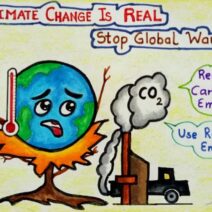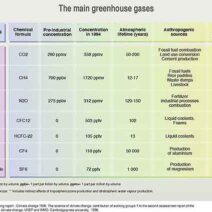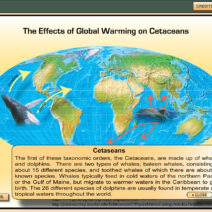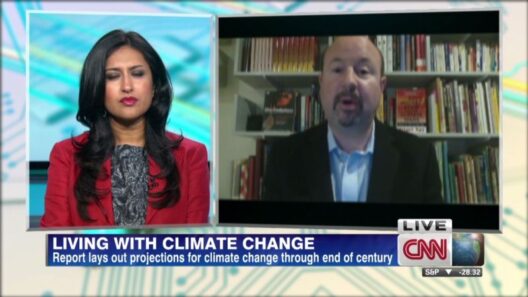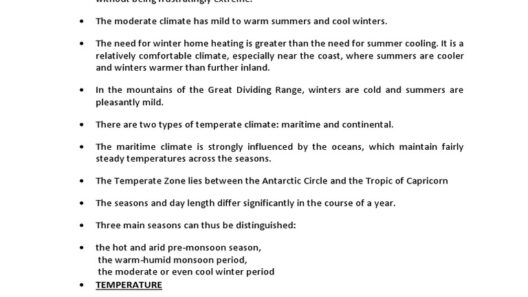The climate change crisis has become an omnipresent issue in recent years, often manifesting itself through the alarming rise in extreme heat phenomena. You might ask, “Why is there more heat amid this crisis?” This seemingly simple inquiry unveils a complex interplay of atmospheric dynamics, human behavior, and Earth’s natural systems. The answer reveals critical insights about our environment and poses profound challenges that we must confront.
To understand why we are experiencing unprecedented heat levels, we must delve into the various ingredients fueling this phenomenon. These include greenhouse gas emissions, urbanization, and the cyclical nature of weather patterns. However, to truly comprehend the escalating intensity of heat events, we should take a closer look at the driving forces behind climate change.
There’s little doubt that greenhouse gases are the principal culprits behind the warming of our planet. How do these gases work? When fossil fuels such as coal, oil, and natural gas are burned for energy, they release carbon dioxide (CO2), methane (CH4), and nitrous oxide (N2O) into the atmosphere. These gases trap heat from the sun, creating a “greenhouse effect” that warms the planet’s surface.
Recent studies elucidate that industrial activities, deforestation, and agricultural practices contribute significantly to these emissions. For instance, the clearing of forests not only leads to a loss of carbon-absorbing trees but also releases stored carbon back into the atmosphere. In effect, the very actions intended to bolster economic development lead us further down the path of destructive warming.
Thus, this first layer of understanding leads us to our next area of exploration: urban heat islands. Picture a cityscape on a scorching day. Skyscrapers and asphalt absorb heat during the day and release it at night, creating an environment that is often several degrees warmer than surrounding rural areas. This phenomenon not only amplifies temperature extremes but also exacerbates heat waves, making them more frequent and intense.
Will future generations inherit a world plagued by this relentless and unforgiving heat? Undoubtedly, unless drastic measures are taken to direct our actions toward sustainability. However, we must first confront our existing infrastructure and urban planning methodologies. Expanding green roofs, integrating parks and green spaces, and updating building standards could mitigate these urban heat effects significantly.
Now, let’s unpack the role of natural climate variability. Climate systems operate on both local and global scales, subject to a myriad of intricate interactions. For instance, phenomena like El Niño and La Niña significantly influence weather patterns, often resulting in extreme temperature fluctuations across various regions. While these natural cycles have existed for millennia, current climate change exacerbates their impacts, leading to a situation where traditional weather norms are rapidly being rewritten.
With increased global temperatures, we’re also witnessing disruptions in typical weather patterns. The jet stream, a high-altitude ribbon of winds, which generally influences weather, is displaying erratic behavior due to the changing climate. These sudden shifts can lead to prolonged heat waves, droughts, or even sudden cold snaps, all of which pose substantial threats to agriculture, human health, and biodiversity.
Conversing about biodiversity, let’s explore how rising temperatures can disrupt ecosystems. The impacts of increased heat extend beyond human populations—they ripple through the natural world. Many species are sensitive to temperature changes, leading to altered migration patterns, disrupted breeding seasons, and even extinction. This creates a cascading effect, as species interlinked in complex ecological webs struggle to adapt to these rapid changes.
In essence, we must grapple with the sobering realization: the increase in heat caused by climate change is a multifaceted dilemma, weaving together anthropogenic influences, natural phenomena, and ecological repercussions. We stand at a critical juncture where our actions—or inactions—will determine the legacy we leave for future generations.
Yet, the playful question lingers: can we, as stewards of our planet, align our collective energies to combat this challenge? The answer lies in our hands. Drastic systemic changes are not merely beneficial but imperative. Every action, such as adopting renewable energy technologies, practicing sustainable agriculture, and fostering awareness about climate change, contributes to the larger endeavor of tempering heat escalation.
The climate crisis is not simply an environmental phenomenon; it poses complex societal challenges that require urgent attention and collective action. As we face the heat of climate change, it is essential to foster courage rather than fear, coalescing our efforts to forge resilient communities, protect ecosystems, and lay the groundwork for a sustainable future. The call for action is clear: now is the time to weather the storm and confront the primary source of our global heating—with solutions rooted not just in science, but in shared values and cooperative spirit.
